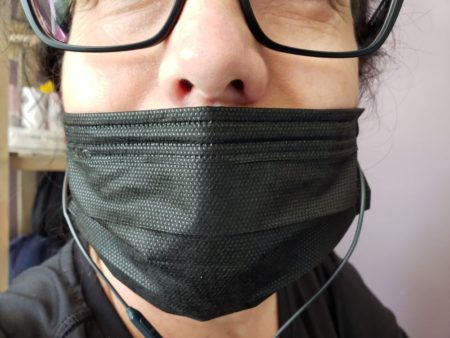Attention to cleanliness in healthcare settings and in your own home and telling the truth about your symptoms could save your and your loved one’s life!
Today, more than ever, we need to attend to the details of cleanliness.
Yes, there are those who believe we need to build up resistance to microbes. And there are those who sneeze and cough without fully covering their mouths. There are those who seldom wash their hands, even before handling food.
While some of my friends have gotten all their COVID and flu-prevention shots, they have all had symptoms and later tested positive for COVID. Some, even caught the flu. The reality is there are so many variants of COVID and the flu, it’s hard to get complete immunization.
Meanwhile, I wash my hands frequently and cover my mouth with a tissue when I sneeze or cough. I caught COVID in January 2020, before we knew about COVID. It hit me so hard, I thought I was going to die. My body’s heroic fight naturally inoculated me. Then two-and-a-half-years later, I tested positive for COVID after having symptoms (severe chills) in July of 2022. Both times I was in Mexico.
We’ve grown lax in our cleanliness.
 News reports in the Los Angeles area advised masking in healthcare facilities. Some wear masks, others don’t. Masks have become politicized. So, it’s more of a personal choice. I choose to wear my mask when I’m in close quarters or among the masses. I know better than to suggest to others to wear their masks. I’ve avoided both the flu and another round of COVID for the 18 months, including a two-week trip to Italy.
News reports in the Los Angeles area advised masking in healthcare facilities. Some wear masks, others don’t. Masks have become politicized. So, it’s more of a personal choice. I choose to wear my mask when I’m in close quarters or among the masses. I know better than to suggest to others to wear their masks. I’ve avoided both the flu and another round of COVID for the 18 months, including a two-week trip to Italy.
People do their own thing. Unless, mandated, people will follow their own safety protocols or none at all. I’ve even seen health-care professionals vary their use of protective equipment when entering rooms with highly contagious MRSA cases and COVID. Some take time to wear full protective garb including head coverings and N95 masks. Others, only a mask. This is how infections spread in healthcare settings.
In 2014, I was inspired to write, When being Obsessively Clean Saves Lives, which concludes with six tips to prevent catching whatever is going around.
Did They Tell the Truth?
During the height of the COVID crisis, medical facilities questioned us about having experienced any of the symptoms of COVID or if we had “come into contact with anyone” with COVID-like symptoms. I’d reply and then ask if they believed people told the truth. Off-the-record (and now on-the-record unattributed), they replied in the negative. “People will come in sneezing and coughing and tell us they have allergies. Most lie.”
And then there are the hired caregivers whose marginal wages with no benefits almost forces then to work each day (with allergies?) to provide food for their families.
I lost a long-time friend shortly before his 89th birthday, recently. While infection may not have been the ultimate cause of his passing, I glanced at his chart while the nurse looked to answer a question and saw the capital letters: MRSA, the antibiotic-resistant yet highly contagious skin-eating bacterial infection.
We must be vigilant. In many cases, there is no second chance to overcome some of these infections and illnesses. Many people lose their lives unnecessarily.
In Your Own Home
And it’s not only in healthcare centers. We need to be equally careful in our own homes, which are also breeding grounds for disease and infection.
How often have you cooked with another only to find that they have different standards for cleanliness than you?
Do you simply peel the outside leaves of lettuce and then rinse it quickly, tap it on the side of the sink to get out most of the water, before serving? Or do you cut it apart and soak it in a solution. Maybe you spread apart the leaves and rinse thoroughly under running water.
Are your friends or family meticulous about bleaching the cutting board after cutting meat? Do you prepare your fruits and vegetables in a separate area from meat?
Do you sneeze or cough in a tissue and then toss the tissue? Or do you use your elbow or worse, your hand and then give a hug or a pat on the shoulder?
Because we are so culturally diversified here in the States, everyone brings their own traditions. While in Armenia over 20 years ago, I’d rinse every fruit and vegetable in a sink partially filled with water with a few drops of bleach. My body was not accustomed to the microbes even though the residents could enjoy their produce with a simple rinse. The same applies to other countries—especially, with drinking water.
I’m thinking, here in the States, we need to return to those mandatory hygiene videos many of us had to watch in school during the 1950s through early 1970s.








